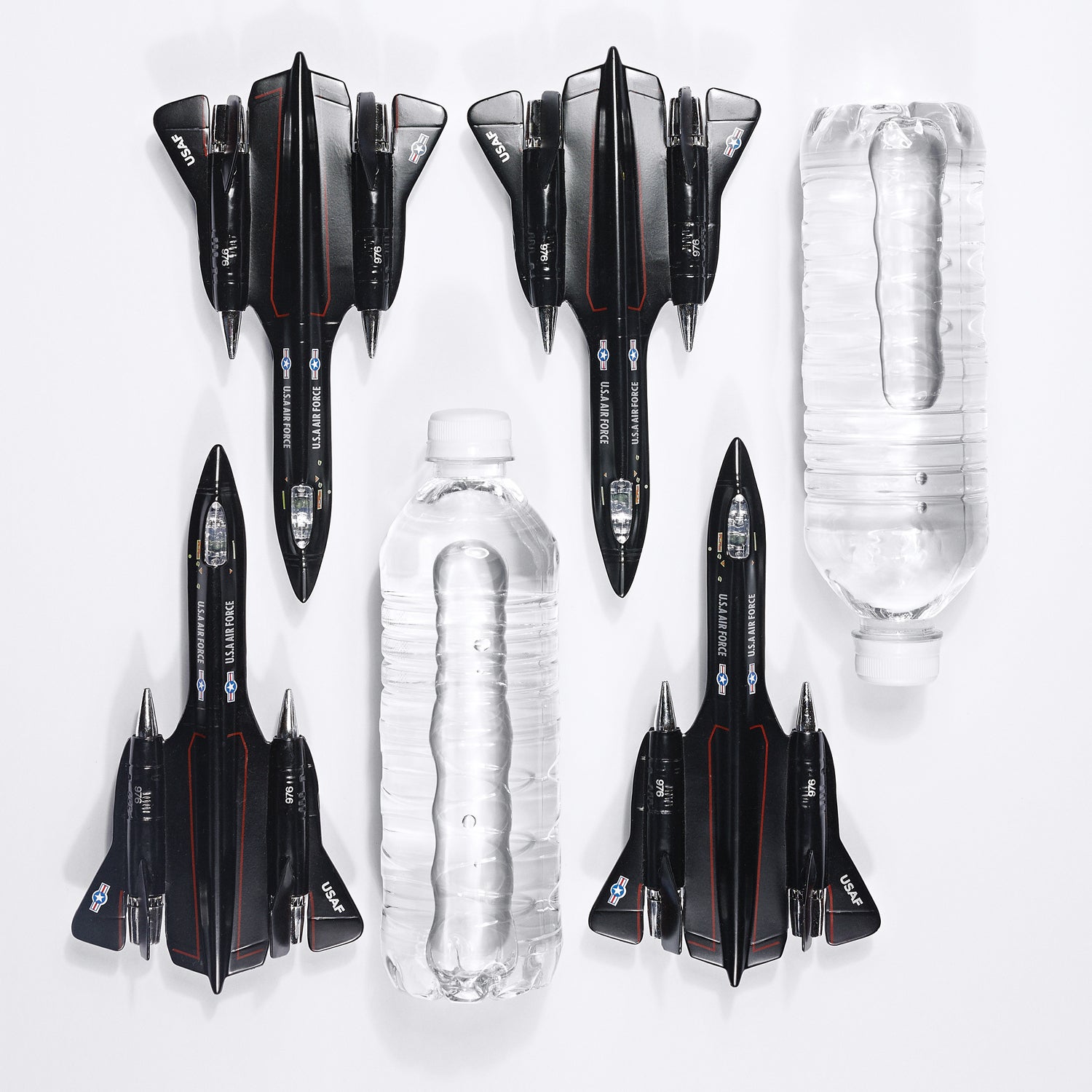As the pace quickened during a mountain stage of the 2013 Tour de France, a jolt of excitement rippled through the peloton: one of the leaders had fumbled the feed bag containing his next drink. тАЬIтАЩd never, ever seen so much chatter on the radio,тАЭ Greg Henderson, a veteran bike racer from New Zealand, later told an interviewer. тАЬIt was like full panic. And I was thinking, Mate, itтАЩs a drink bottle. Go back and get another one.тАЭ
Eventually, a team car stopped to collect the bag from the side of the road where it had fallen, and another rider shuttled it back up to the cyclist. тАЬI was gobsmacked,тАЭ said Henderson. тАЬI was just like, What can be so important in this drink bottle?тАЭ
The answer, he now suspects, was ketones, the much hyped тАЬfourth macronutrientтАЭ that offers a sustainedтАФand legalтАФsource of energy for muscles beyond the traditional carb┬нohydrates, fats, and proteins. For several years, whispers of an astronomically ex┬нpensive, ketone-based superdrink have percolated through the elite sports world, par┬нtic┬нularly among cyclists. Now, courtesy of San Francisco biohacking startup (pro┬нnounced тАЬhumanтАЭ), that elixir is on the market. The debate, however, has shifted to a knotty question: Does it work?
The ╗х░ї╛▒▓╘░ьтАЩs origins date back to a 2003 request for proposals from the Defense Advanced Research Projects Agency, the U.S. militaryтАЩs idea factory, for ways to keep soldiers physically and cognitively sharp through multi-day battles. A team of scientists, including Richard Veech of the National Institutes of Health and Kieran Clarke of Oxford University, floated a novel concept. You already have a form of emergency fuel called ketone bodies, produced in your liver from fat, that kicks in when youтАЩre approaching starvation. These ketones provide energy for the brain and muscles and can also alter your metabolism to draw more energy from fat stores while conserving precious carbohydrates. Perhaps soldiers could get a similar result by drinking ketones, the scientists hypothesized. The military gave them $10 million to find out.
While Veech and Clarke were plodding through the painstaking process of developing a drink, proving its safety, and getting the FDA to sign off, the once obscure topic of ketones went mainstream. Following a low-carb, high-fat diet, it turned out, could dramatically elevate ketone levels even in the absence of starvation. Ketogenic diets became popular among ultra-endurance athletes, and companies began marketing a variety of ketone-based concoctions that promised all the benefits of going low-carb without having to give up pasta and beer.
To put it politely, these drinks had varying levels of credibility. тАЬRaspberry ketones are ludicrous,тАЭ Clarke says, recalling a fad sparked by Dr. Oz in 2012. тАЬTheyтАЩre not naturally found in the body, and you canтАЩt metabolize them, so theyтАЩre a total waste of money.тАЭ Ketone-salt drinks offered a way of getting the real thing, but with a massive, unhealthy dose of sodium in each bottleтАФand no evidence of athletic enhancement.
You already have a form of emergency fuel called ketone bodies, produced in your liver from fat, that kicks in when youтАЩre approaching starvation.
Then, in 2016, Clarke and her colleagues published a in the journal Cell Metabolism. By combining ketones with an alcohol compound, they managed to create a ketone ester that people could consume like an ordinary drink. Once inside the body, the ketones provided fuel for muscles, allowing limited carbohydrate stores to last longer. In a 30-minute time trial after an hour of hard riding at a steady pace, eight elite cyclists improved their performance by an average of 2 pe┬нrcent over a placebo ride, completing roughly an extra quarter-mile. The problem? The drink tasted like gasoline and cost $100 per serving to produce, down from an initial $25,000.
In November, Hvmn rolled out Hvmn Ketone, a commercial version of ClarkeтАЩs ketone-ester drink. (ItтАЩs available for preorder, with an expected ship date of early 2018.) Manufacturing improvements have made it somewhat cheaper at three bottles for $99, and itтАЩs still not for the faint of stomach: тАЬmetallic almond milkтАЭ is how one tester characterized an early version, and thatтАЩs among the nicer descriptions. According to Geoff Woo, the companyтАЩs CEO, Hvmn Ketone is already being used in Grand Tour cycling, in the NFL, and at the Ironman World ChampionshipтАФwith the identities of the athletes and teams whoтАЩve adopted it, perhaps conveniently, protected by nondisclosure agreements.
Elite endurance athletes are paying close attention. A few weeks before Hvmn unveiled its drink, researchers in Australia published the results of a study in which 11 cyclists from the Orica-BikeExchange team rode a 19.25-mile time trial of a computer-simulated version of the 2017 World Championships course, with and without having consumed a rival ketone-ester drink, developed by University of South Florida researcher Dominic DтАЩAgostino. Instead of boosting endurance, the ketone drinkers slowed down about 2 percentтАФperhaps because every single one of them experienced gastrointestinal side effects that ranged from mild nausea to prolonged vomiting and dizziness.
Another study, conducted by researchers at the University of British ColumbiaтАУ┬нOkanagan, found that ┬нboosting ┬нketone levels with a ketone-salt drink slowed cycling performance by 7 percent in an 11-minute time trial. The problem, lead sci┬нen┬нtist Jonathan Little explains, is that ele┬нvated ketone levels seem to inhibit access to the quick-burning carbohydrates needed for shorter, high-octane efforts. Clarke concurs, pegging the threshold of usefulness at sustained efforts lasting at least 20 minutes. тАЬAs soon as youтАЩre up to 75 percent of your maximum workload, I wouldnтАЩt even go near a ketone,тАЭ she says.
Woo notes the criticisms and caveats but says itтАЩs wrong to think that all ketone drinks are created equalтАФjust because one ketone ester makes people vomit doesnтАЩt mean they all do. Clarke and her colleagues, meanwhile, continue to churn out studies showing the ╗х░ї╛▒▓╘░ьтАЩs potentialтАФfaster post-workout replenishment of carb stores in depleted muscles, reduced appetite hormones, and even (in maze-running rats, at least) better cognitive performance.
So should you shell out for a boost? ThatтАЩs a tough one, because the true size and nature of the edgeтАФor lack thereofтАФthat ketones offer in real-world settings will likely take years to sort out. After all, the margins are small. тАЬFor a healthy human adult,тАЭ Woo admits, тАЬitтАЩs hard to enhance performance.тАЭ The whispers in the peloton will likely continueтАФbut at least if another Tour rider drops his bottle of superfuel, someone else will probably be able to lend him a spare.┬а
The Rise of Superdrinks
Hvmn isnтАЩt the only sports-drink company playing the science card, but giving the human body a reliable boost remains a challenge
Maurten: This Swedish burst onto the scene in 2017 with claims that its hydrogel-encapsulated carbohydrate drink could deliver a concentrated dose of energy to endurance athletes without upsetting their stomachs. It has won over top marathoners like Eliud KipchogeтАФbut the company has yet to publish research backing up its claims.
Generation Ucan: This sports secret is its SuperStarch, a corn-based carbohydrate thatтАЩs supposed to release glucose slowly and steadily into the bloodstream instead of in a rapid spike. Runner Meb Keflezighi swears by it, but whether the lab results translate to faster race times remains contested.
Gatorade Gx: In 2016, Gatorade this тАЬsports fuel customization platform,тАЭ which includes a digital sweat patch that communicates wirelessly with the cap of your water bottle to enable real-time customized hydration. The launch has been pushed back several times, and the science isтАФwell, you get the picture.


